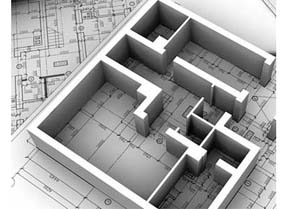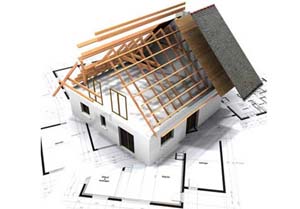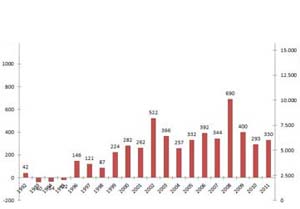 |
|
| Appunti tecniche |
|
 |
|
| Appunti tecniche |
|
| Visite: 3613 | Gradito: |
Leggi anche appunti:Le StradeLe Strade · Generalitą Fin dall'antichitą la Misure delle condizioni di benessere termico di un edificio realizzato in adobeMisure delle condizioni di benessere termico di un edificio realizzato in adobe 1 FUORI DALLA CITTĄ ANTICA - Il curioso caso dei ronchi e la progettazione stradaleFUORI DALLA CITTĄ ANTICA Il curioso caso dei ronchi e la progettazione stradale La |
 |
 |
Carbonia
The region called Sulcis
occupies the south-west end of Sardinia, from the valley of the river Cixerri
to the wide Gulf of Palmas in front of which are situated the isles of San
Pietro and Sant'Antioco, two isles of volcanic origin and the biggest along the
Sardinian coast.
The land, known from ancient times for its fertility and the richness of the
subsoil, attracted a lot of Mediterranean peoples that during the centuries
colonised it: Phoenicians, Carthaginians, Romans and more recently Aragoneses.
During the early Middle Ages and the 15th and 16th centuries, Sulcis knew a
strong demographic diminution and the progressive concentration of the people
in few inland villages. The coasts were abandoned in consequence of insecurity,
outer invasions, Barbaresque raids, the abandonment of the cereals growing and
the malaria. The reoccupation of the territory and hence the demographic
inversion started at the end of the 16th century when, during the winter,
shepherds coming from the centre of Sardinia led their flocks on the mild hills
of Sulcis and, in order to shelter them in those periods of transhumance, they
built seasonal huts called "medau". They were the first nuclei of the dispersed
habitat that still today characterized the territory of Sulcis. At the end of
the 18th century this kind of habitat from temporary became permanent; it
happened that as soon as the place proved to be peaceful, the shepherds began
to settle with their families, to farm the land and to replace the huts by
masonry houses.
The history of Spanish and Piedmontese Sulcis is not marked by particular
events while a new liveliness, above all economic, followed to the discovery of
a coal field in 1851.
|
Mining installation |
The new labour prospects in the mines produced a gradual but deep change in the people and in the territory. The exploitation of the resources of the subsoil, particularly in the Bacu Abis area, increased during the First World War. At the end of the war and with the resumption of the international trade, the brief fortune of the Sardinian coal ended; it was only the Fascist regime to 'rediscover it' adopting the formula of the autarchy from the second half of the thirties.
|
Mussolini's visit |
The last months of 1936, the Italian Coal Firm (A.Ca.I.), with the system of the drilling, located the Sirai-Serbariu field that revealed itself to be immense. The expectation of an intense activity in the new pits and the consequent arrive of labour suggested the project of new working town near the mines and the port of Sant'Antioco in order to secure the transport of the extracted materials.
|
The inauguration of the town |
The new
town, called Carbonia, was built in a short time and inaugurated by Mussolini
in 1938. From an architectural point of view it is characterized by the typical
elements of the Fascist towns.
At the centre there is Piazza Roma around which stand the main buildings: the
Torre Littoria (27.5 m.) today municipal tower, the Town Hall, the church, the
'dopolavoro' (Fascist institution organizing the workers' free-time
activities), the cinema-theatre and two great fountains. The Church of San
Ponziano follows the Modern-Romanesque style; it is built in granite and
trachyte. The rectory and the bell-tower (46 m.), a smaller reproduction of the
bell-tower of Aquileia, are adjacent.
|
Piazza Roma and the adjoining buildings |
The A.Ca.I. ordered the town-plan to its technical office, formed an autonomous institute for the council houses, charged the eng. C. Valle and I. Guidi to plan the town and built an electric power station supplied with the Sulcis coal. At the beginning the inhabited spaces considered the pyramidal structure of the Fascist hierarchy and the rolls existent in the mine: the centre was reserved for the houses of the managing ( Villa Sulcis, today the Archaeological Museum, was the official residence of the Director of the coal mines of the town), the houses of the clerks were placed near them while the humble houses for the workers occupied the suburbs.
|
Suburbs |
After a first period of intense extractive activity, as the Second World War went on, the productive rhythm slackened remarkably. When the Fascism ended, there was a renewal of activity (the Sulcis coal represented the only fuel available in Italy for the renewal of the national industry) and a second stage in the development of the town of Carbonia from both a demographic and an economic point of view. But soon after the reopening of the international markets and the subsequent competition of the foreign coal, took the mining industry to a slow but inexorable crisis that gave rise to a large working and town mobilization. This crisis, together with the closing of the industries at Portovesme, created in the region Sulcis a difficult economic situation to which activities such as tourism, culture and services try to answer.

 |
| Appunti su: |
|
| Appunti costruzione |  |
| Tesine Elettronica elettricita |  |
| Lezioni Demografia urbanistica |  |